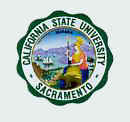 |
California State University, Sacramento Department of Sociology | |
Back to Home page Back to Resources page Mind Stimulating Exercises The Sociological Imagination
The "Sociological Imagination" was introduced by C. Wright Mills in 1959. This book was an insightful critique of the research enterprise in sociology. Mills left no stone unturned within sociology with respect to his critical examination of the discipline, including the works of the renowned sociologist Talcott Parsons as well as his own works. Throughout his career until his untimely death, Mills struggled with the question, "what is the nature of the social sciences." He uniquely described the "promise" of sociology for a world of people trapped in a virtual maze of "private troubles."
“Nowadays people often feel that their private lives are a series of traps. They sense that within their everyday worlds, they cannot overcome their troubles, and in this feeling, they are often quite correct. What ordinary people are directly aware of and what they try to do are bounded by the private orbits in which they live; their visions and their powers are limited to the close-up scenes of job, family, neighborhood; and other milieu, they move vicariously and remain spectators. And the more aware they become, however vaguely, of ambitions and of threats which transcend their immediate locales, the more trapped they seem to feel.” (Mills, 1959:3)
"…a quality of mind that will help them to use information and to develop reason in order to achieve lucid summations of what is going on in the world and of what may be happening within themselves. It is this quality, I am going to contend, that journalists and scholars, artists and publics, scientists and editors are coming to expect of what may be called the sociological imagination." (Mills, 1959:5)
The sociological imagination distinguishes between two very distinct spheres of reality, “private troubles,” and “public issues.” “Perhaps the most fruitful distinction with which the sociological imagination works is between 'the personal troubles of milieu' and 'the public issues of social structure…” (Mills, 1959:8) “Troubles occur within the character of the individual and within the range of his or her immediate relations with others; they have to do with one's self and with those limited areas of social life of which one is directly and personally aware.…” (Mills, 1959:8) “Issues have to do with matters that transcend these local environments of the individual and the range of their inner life. They have to do with the organization of many such milieu into the institutions of an historical society as a whole, with the ways in which various milieu overlap and interpenetrate to form the larger structure of social and historical life. An issue is a public matter: some value cherished by publics is felt to be threatened...” (Mills, 1959:8) “Know that many personal troubles cannot be solved merely as troubles, but must be understood in terms of public issues- and in terms of the problems of history-making. Know that the human meaning of public issues must be revealed by relating them to personal troubles- and to the problems of the individual life. Know that the problems of social science, when adequately formulated, must include both troubles and issues, both biography and history, and the range of their intricate relations. Within that range the life of the individual and the making of societies occur; and within that range the sociological imagination has its chance to make a difference in the quality of human life in our time." (Mills, 1959:226) “The sociological imagination enables its possessor to understand the larger historical scene in terms of its meaning of the inner life and the external career of a variety of individuals.” (Mills, 1959:5) “The sociological imagination enables us to grasp history and biography and the relations between the two within society. That is its task and its promise. (Mills, 1959:6) Mills also makes a distinction between the social scientist and the mere technician. The mere technician is too strictly wed to specific theories and methods. From this rigid scientific paradigm he never ventures out into anomalous aspects of the social world. However, the social scientist possesses: “... the capacity to shift from one perspective to another, and in the process to build up an adequate view of a total society and of its components. It is this imagination, of course, that sets off the, social scientist from the mere technician. Adequate technicians can be trained in a few years. The sociological imagination can also be cultivated; certainly it seldom occurs without a great deal of often routine work. Yet there is an unexpected quality about it, perhaps because its essence is the combination of ideas that no one expected were combinable say, a mess of ideas from German philosophy and British economics. There is a playfulness of mind back of such combining as well as a truly fierce drive to make sense of the world, which the technician as such usually lacks. Perhaps he is too well trained, too precisely trained. Since one can be trained only in what is already known, training sometimes incapacitates one from learning new ways; it makes one rebel against what is bound to be at first loose and even sloppy. But you must cling to such vague images and notions, if they are yours, and you must work them out. For it is in such forms that original ideas, if any, almost always first appear.” (Mills, 1959:7) Add the "Sociological Imagination" to your reading list.
Thinking about society requires the ability to think theoretically. Discover your sociological imagination. I have provided a link to some exercises below that you may find stimulating and fun. C. Wright Mills (1959). The Sociological Imagination. Oxford University Press: New York. |
||
| Sociology Department |
||